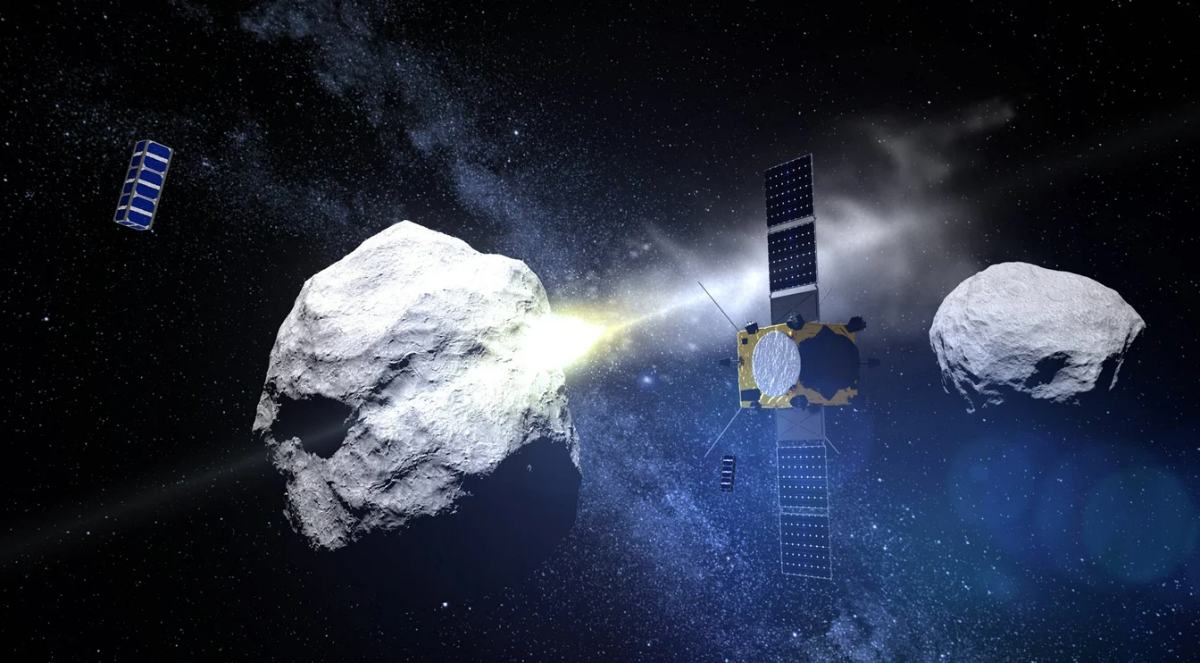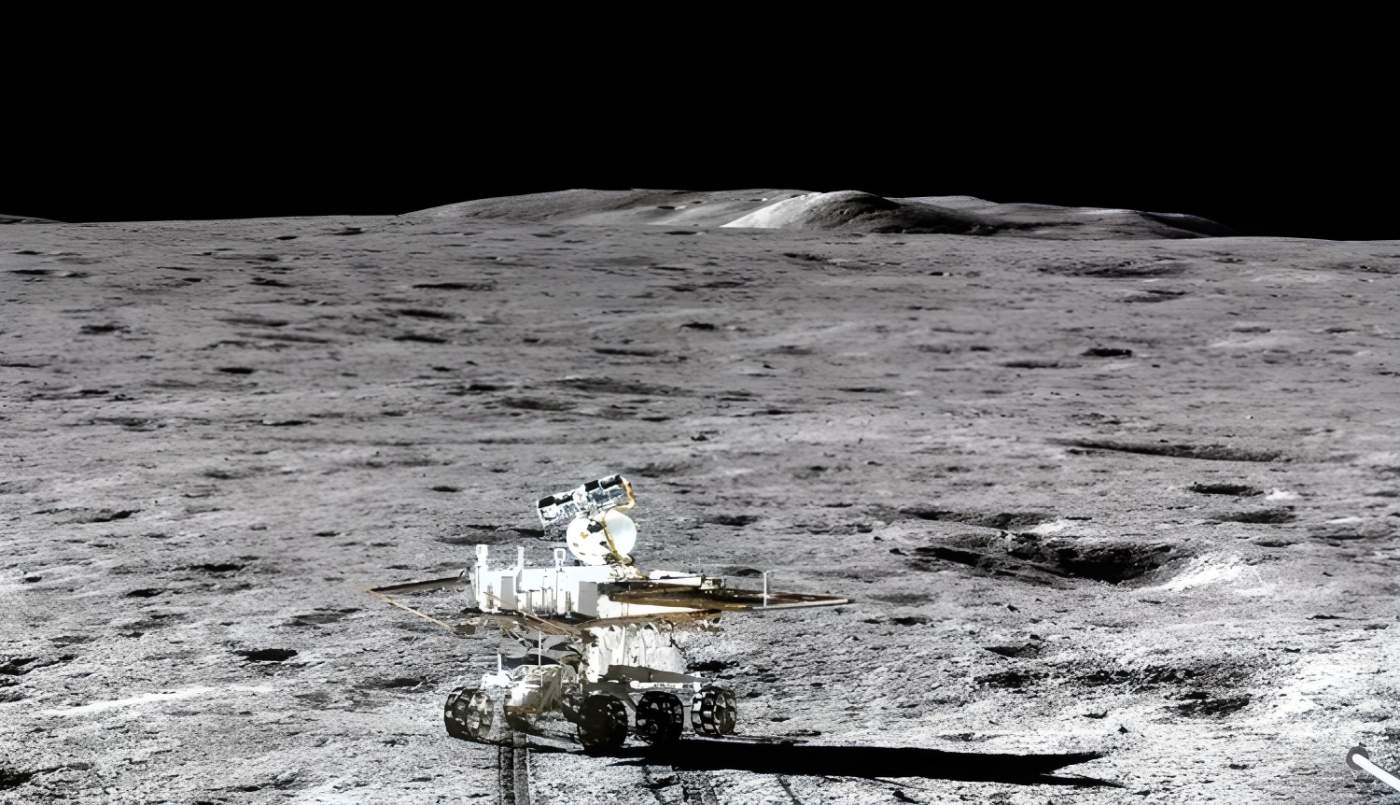Networks of thousands of mini-satellites are presently being placed in earth orbit, which allow for broadband Internet access even in the remotest corners of the planet, data linkages for autonomous cars or drones, and communications everywhere. There are pros and drawbacks to these mega-constellations, which promise nothing less than a new era in global communications.
Competition in the satellite Internet industry has begun. SpaceX with Starlink, Amazon with the Kuiper project, and OneWeb, a corporation formed particularly for this purpose, are the three private firms now in direct rivalry. However, both China and the EU have stated their ambition to launch their own satellite networks into space in the near future. Big bucks and total control of the digital communications market are in sight.
However, some people have a negative opinion about putting tens of thousands of satellites into Earth’s orbit. Astronomers are concerned that this may cause light pollution and interference with their telescope observations. The increased risk of accidents and space debris is a major concern for space organizations.
What does satellite internet bring?
The issue is not new: although individuals in major cities and urban regions benefit from continual connectivity and relatively fast data transfer rates made possible by broadband Internet and extensive cellular coverage, those living in rural areas are left in the digital darkness. Fiber optic connections are the stuff of fantasy for those living in rural areas of even highly developed nations like Germany.
Almost half of the world’s population is still offline

And on a worldwide basis, this digital divide is much more severe: Approximately half of the world’s population uses the Internet, with estimates putting the number of users at slightly under four billion. When it comes to network availability, developing nations and sparsely populated areas like Asia’s steppes do the worst. According to the International Telecommunications Union (ITU), a full 72% of Africa and slightly more than half of Asia lacked access to the internet in 2020.
This is because installing data connections, whether fiber optic or even copper cables, is a difficult and costly process. The same is true for the construction and installation of cell towers. This is profitable for commercial network providers only if a sufficient number of users are present in the region. Despite claims to the contrary, if this is not the case, laying the cables or constructing the antennas is a loss-making business and has thus simply not been done to date.
Satellite network instead of cable
At this point, the mega-constellations become relevant: Through orbiting networks of communications satellites, we hope to speed up Internet and cell phone service in regions where they were previously unavailable or painfully slow. These constellations provide continuous service because their hundreds to thousands of mini-satellites are evenly spaced over the world. One thousand kilometers is the extent of the coverage area that can be provided by a single satellite in SpaceX’s Starlink constellation.
The satellites used for telecommunications and broadcasting are located in geostationary orbit at an altitude of 36,000 kilometers; the mini-satellites of the mega-constellations, in contrast, travel in low earth orbit (LEO) at an altitude of 500 to 1,500 kilometers. In these constellations, many satellites should be able to cover any given area, resulting in a reliable connection. One satellite’s loss of communication won’t affect the operation of the system as a whole.
Each satellite weighs around 250 kilograms and is equipped with little, making them far cheaper to manufacture than traditional communications satellites. Constellation mini-satellites are minimally equipped with a radio antenna and transmitter, a couple of tiny solar sails, a computer, a star and sun tracker for navigation, and an ion propulsion engine. Because they are cheap to construct in bulk, these satellites may be launched in batches of 60–75 at a time.
Increased data transfer speed and lower latency
The new mega-constellations’ increased capacity and transmission speeds are the main benefits over earlier satellite broadcasts. The Ka and Ku bands of the microwave spectrum are used by satellites in low Earth orbit, and their frequencies range from around 12 to 40 gigahertz. Providers of the new satellite Internet have made claims that the short-wave Ka band is capable of very high data transfer speeds, rivaling or even surpassing those of terrestrial broadband services.
The latency of up to 700 milliseconds experienced by a signal sent by a typical communications satellite renders real-time remote control of equipment, video telephony, and other real-time applications impractical over such links. In low Earth orbit, communications travel a fraction of the distance, bringing latency down to 20 to 40 ms, which is practically on par with fiber-optic and DSL speeds.
New application possibilities
The Internet via satellite gains a wealth of new uses because of these characteristics. The mega-constellations may be useful for a variety of emerging technologies, as well as the possibility of bringing high-speed Internet to previously unconnected locations. One potential use of this lightning-fast satellite link is the remote operation of automobiles, aerial vehicles, and other robotic companions in real-time. This might make remote monitoring of pipelines, disaster zones, or even agricultural fields and plantations simpler than ever before. In the future, satellite transmissions may potentially be useful for autonomous cars.
Improvements might also be made to the Internet connectivity of ships, planes, and moving vehicles. They had to rely on mobile phones or wired links to older types of satellite communications before this. However, mega-constellations may be able to provide broadband connectivity to even moving targets like ships at sea or aircraft in the sky. For its Starlink system, SpaceX has already submitted license applications to the U.S. Federal Communications Commission for use of such mobile apps began in the spring of 2021.
However, only those who can afford the monthly fees and the price of the satellite dish and router will be able to take advantage of this exciting new world of the Internet. The cost of using Starlink’s beta version is $99 per month plus an initial equipment cost of $499. Despite the fact that Starlink is making a profit on these basic bundles at the moment, they are still likely to be out of reach for many in developing nations.
Starlink – the pioneer
What is the purpose of SpaceX’s constellation?
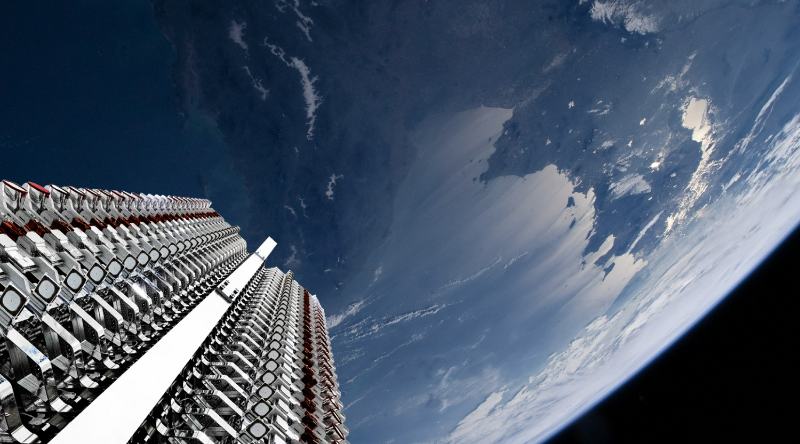
Three privately held corporations owned by some of the world’s wealthiest individuals own the most technologically sophisticated mega-constellations. Elon Musk, the creator of Tesla and CEO of SpaceX, is at the helm of the Starlink project. The only satellite network that is up and operating at the moment is his, and it is still in beta.
There are now around 2,200 operational satellites
In 2018, SpaceX tested only two prototype satellites; in May of this year, the company started constructing its orbital network. The startup has gotten off to a sluggish start, but now every two weeks it sends a Falcon 9 rocket carrying between 50 and 70 miniature satellites into orbit. In September of 2021, there were around 1,800 Starlink satellites in orbit, and that number is steadily increasing. Today it is around 2,200.
Most of the 1,440 Starlink satellites already in orbit are part of the “first dish” of the mega-constellation, which is located at a height of 550 kilometers and has orbits inclined at 53 degrees to the Earth’s equator. There are also more shells with tens of thousands of satellites, orbiting at varying inclinations and altitudes between 540 and 570 kilometers. The current approval status indicates that 4,408 satellites will make up the Starlink constellation.
Future plans call for around 7,000 more Starlink satellites to be placed in an even lower orbit, between 335 and 345 kilometers above the earth. They will make use of the unused portion of the communications spectrum that lies between 40 and 52 gigahertz. All systems are expected to be finished by 2027.
Currently, 40 countries have access
Starlink’s network beta shows that it’s possible to go online through satellite and how successfully it does so. Access to Starlink was initially restricted to users in the United States, Canada, and the United Kingdom; but, beginning in the spring of 2021, certain European nations, notably Germany, have been granted restricted access. In 2022, Starlink went live in Japan and India. More than 100,000 users and 500,000 pre-orders have been reported for the satellite network’s beta edition.
Initial tests conducted in the USA demonstrate how reliable the satellite connections are. These claim that Starlink has reached peak download rates of 168 Mbit/s and average download speeds of 97 Mbit/s. This indicates that orbital data transfer already approaches the 115 Mbit/s baseline US broadband Internet bandwidth and even significantly outperforms it locally. In the UK, Starlink has a download speed that is almost nearly twice as fast as the typical broadband connection, at 108 Mbit/s. In terms of uploads, Starlink is reportedly only slightly slower than wired internet speeds.
However, while Starlink works to enhance the system’s hardware and software, beta customers are still forced to deal with sporadic satellite connection failures. Transmission rates are anticipated to rise even more as the number of satellites in orbit rises: “Data rates, latency, and network availability will improve considerably as we launch more satellites, deploy more ground stations, and upgrade our network software,” according to a Starlink announcement.
Data congestion in metropolitan areas
There is a caveat, though: satellite Internet becomes slower the more people use it from a single area. Elon Musk, chief executive officer of SpaceX, said in a tweet that “Starlink is built for low to medium population densities.” That implies that in certain regions, we might quickly exceed our maximum user capacity. This essentially implies that sparsely inhabited areas are where satellite constellations may best use their benefits. On the other hand, fiber optics companies may continue to lead in urban regions.
The rivals
In addition to promising faster Internet and improved data transfer, mega-constellations in Earth orbit might end up being a true money mine for their operators. Whoever wins here might have a significant lead over their rivals. Currently, there is a tremendous race for who can expand orbital Internet capacity quickly. State participants like China and the European Union are getting ready to join the competition.
OneWeb: Getting closer
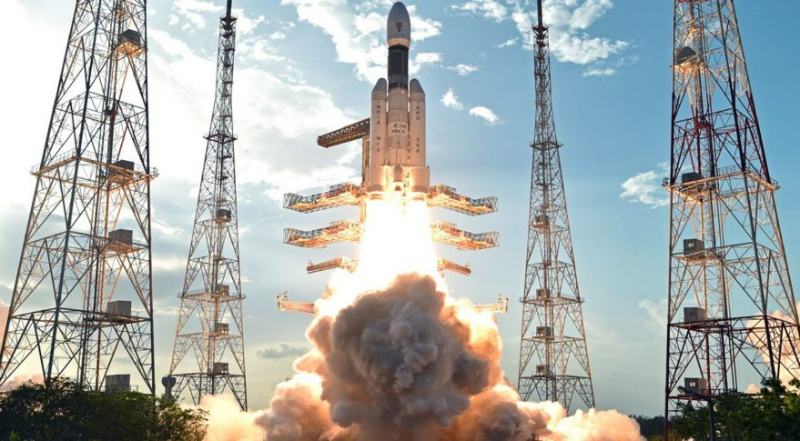
With its Starlink constellation, SpaceX is the first to launch, but two rivals are right behind it. The closest is OneWeb, a business created especially for satellite broadcasting. It launched its first six test satellites into orbit in February 2019, using a Soyuz rocket as a payload. However, OneWeb only just avoided a pandemic-related bankruptcy in the summer of 2020. The corporation didn’t have the requisite cash once again until Bharti Airtel and the British government entered the picture. The satellite gear is also being co-manufactured by the European airline Airbus.
358 OneWeb spacecraft, or almost half of the 648 constellations intended for the first expansion stage, are already in orbit above the Earth. In 2022, it’s expected to be finished and put into use. The OneWeb constellation covered the whole planet by May or June 2022, according to billionaire businessman and CEO of Bharti Enterprises Sunil Mittal. OneWeb has submitted applications for permission to launch 6,372 satellites, and there are already plans for further mega-constellation expansion phases.
Yet a different target audience
Unlike Starlink, the OneWeb satellites orbit at a height of 1,200 kilometers and have an inclination to the equator of a respectable 98 degrees. Because of this, they need fewer satellites for comprehensive coverage and can even reach high latitudes. There were enough satellites in orbit by the end of 2021 to provide orbital Internet service north of 50 degrees latitude.
OneWeb partner Airbus said in July 2021 that “this will allow coverage of Northern Europe, the UK, Canada, Alaska, Greenland, Iceland, and the Arctic Ocean.” This would be beneficial for the region’s ships and planes, in addition to the nations there. However, since the signals must go a little farther than with Starlink satellites, which soar just half as high, latency may be a little greater.
OneWeb is not designed to give direct access to individual users; rather, it targets organizations such as enterprises, telecommunications companies, governmental bodies, or whole towns as clients.
Amazon: A delayed launch
Amazon is the third but currently least developed commercial satellite Internet rival. The business intends to place a mega-constellation of 3,236 satellites in Earth orbit as part of “Project Kuiper.” By 2026, half of these spacecraft should be in orbit. Similar to Starlink, the constellation will be spread out among three dishes at a height of 560 to 630 kilometers and will transmit data mostly in the Ka-band.
However, Amazon is now far behind its rivals. While Amazon is currently hiring experts for the project, Starlink already has the beta version of their satellite Internet up and running. Additionally, according to reports, the business allegedly collaborated with Facebook to borrow certain staff for this project, which was made public in July 2021.
Better synergy effects
However, the Amazon constellation has a certain benefit that might compensate for this weakness: Amazon can seamlessly combine Project Kuiper’s transmission services with its current Internet offerings, most notably Amazon Web Services (AWS) cloud storage, unlike its rivals. “Data may be sent from point A to point B by SpaceX. However, Amazon is able to provide data to customers and its cloud services through the satellite network” Zac Manchester of Stanford University says.
This would provide many Amazon cloud service users with the benefit of being able to access their data quickly and anywhere they are using fast broadband connections, in addition to being able to outsource computationally intensive applications that require a lot of storage space to the cloud as they have done in the past.
Government initiatives
Even while commercial businesses are the most advanced in mega-constellations, state players have also woken up in the meantime. They don’t want to take the chance of being excluded from the lucrative and maybe crucial satellite Internet market in the future.
China: 13,000 satellites requested

The first state participant to begin is China. Several reports claim that the nation started working on creating its own satellite constellation in 2018. According to Bai Weimin of China’s State Space Administration (CASC), among others, the first prototypes have already been constructed and put through orbital testing. “We are planning and developing Internet satellites and have already launched test satellites,” he said in an interview with Shanghai Security News. Officially included in the five-year plan for 2021 to 2026 that President Xi Jinping and his administration have established is a satellite Internet.
According to a proposal made to the International Telecommunication Union (ITU) in September 2020, the Chinese mega-constellation would include up to 13,000 satellites spread out in a variety of orbits between 500 and 1,145 kilometers in height. According to reports, a national network firm was founded expressly to build these satellites. By 2022 at the latest, the first wave of 60 test satellites will be sent into orbit.
It is not yet known whether the Chinese satellite Internet will be available worldwide or if it will solely serve Chinese citizens. “The domestic market seems to be the present emphasis. However, similar to previous technologies, such as high-speed rail, it is also plausible that China would first work out any flaws domestically before marketing the service internationally.” In October, American analyst Bhavya Lal stated.
EU: A feasibility study is in progress
The European Union arrived relatively late to the party. It has only asked a group of aerospace, telecommunications, and satellite manufacturing businesses to research the viability and need for an orbital communications system in 2020. According to consortium member Airbus, the project “will examine how a space-based system may complement and link essential infrastructures.” Additionally, the advantages of using cloud services will be examined. By the end of 2021, the review’s preliminary findings are anticipated.
“We can observe that certain constellations are still in the process of formation. However, they are not European, which might present a problem for European member states as we consider safe connection inside and beyond the continent,” said Dominic Hayes of the Space and Defense Division of the EU Commission. The goal is to prevent future reliance on commercial suppliers by European governments, agencies, and even military users.
Hoping to benefit from a “late birth”
Hayes admits, “We don’t have the benefit of being first to market.” However, the fact that certain parts and technologies are developed by commercial pioneers and can later be manufactured more affordably might be advantageous for Europe. The EU expert uses the Starlink system’s receivers as an illustration: Up until this point, SpaceX had been making theoretical losses by selling the antennas and routers below their market value. But in the future, mass manufacturing might make such receivers substantially less expensive.
Who will be engaged in building and developing a European satellite constellation if that option is chosen? This is a valid concern. Along with the businesses already participating in the feasibility study, another potential applicant would have been the French satellite operator Eutelsat. But in April 2021, the latter made a $550 million investment in OneWeb, making it a direct rival to a proposed European constellation.
EU Internal Market Commissioner Thierry Breton said, “I don’t understand how one participant can be participating in two rival initiatives.” According to him, the new EU structure is critically necessary for the bloc’s autonomy, sovereignty, and future. Breton said, “We won’t give up on this.”
Space debris and collisions
The drawback of massive constellations
Earth’s orbit is becoming increasingly crowded: If all the mega-constellations planned so far come to pass, there may eventually be as many as 100,000 satellites orbiting the planet, which is significantly more than the roughly 2,500 “normal” military and civilian satellites that have been in place up to this point. Astronomers and space agencies alike have serious worries about this in a number of ways.
Near-collision averted

The European Space Agency (ESA) had to conduct an evasive maneuver with its Aeolus Earth observation satellite because a collision with a Starlink mini-satellite was about to occur on September 2, 2019, proving how legitimate such worries are. The Aeolus launched its thrusters, lifting its orbit by 350 meters, barely averting the collision.
The Starlink satellites are really designed to automatically avoid other flying objects, but a flaw prevented this from happening in this instance. ESA has to respond as a result. It’s true that this prevented damage to both satellites and further space junk and collision debris from entering Earth’s orbit. However, such evasive actions are fuel-intensive and only effective when the threat is identified in time. Each ESA satellite in low Earth orbit already receives two collision warning signals each week.
The topic of when a costly and time-consuming evasive maneuver becomes essential is also raised by such warnings: “Such actions would be routine if you already respond at a collision probability of 1:10,000. But with a risk of being struck off at 1 in 50, it’s quite likely,” Hugh Lewis from Southampton University recently explained the problem. Monitoring systems are currently not accurate enough to tell the difference between a collision and a barely missed one in advance.
Who has to dodge?
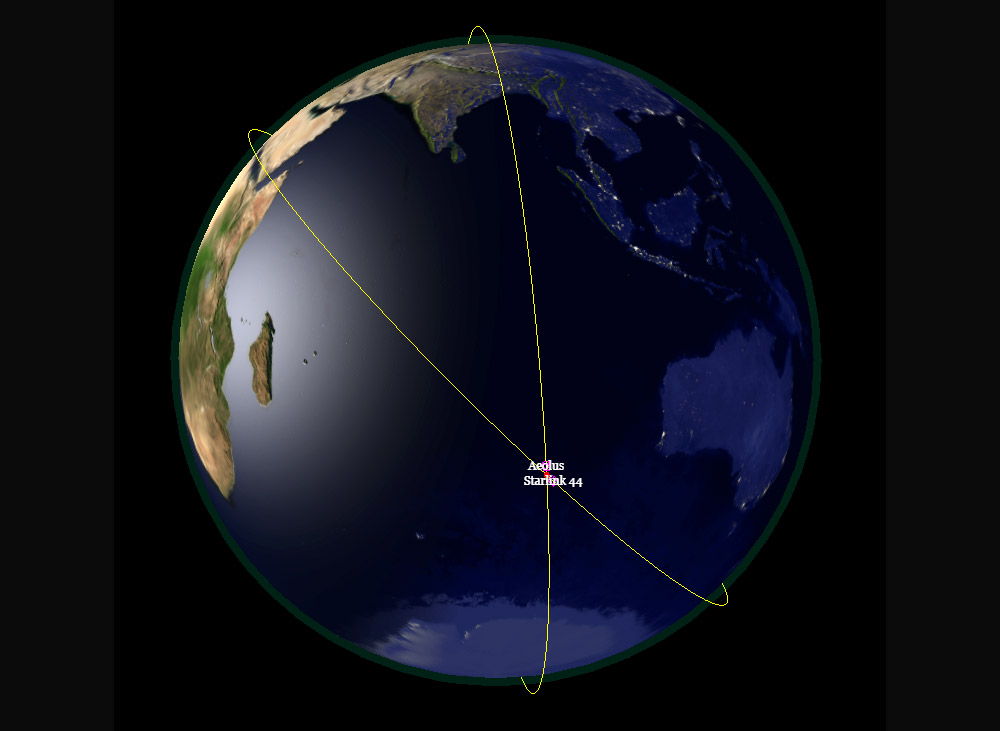
Another issue is that there are now no defined traffic regulations in orbit: It is not immediately evident who has to be avoided and there are no automatic communication procedures between the operators involved. Holger Krag, director of the ESA’s Space Safety Program, adds that there is a pressing need to catch up in this area. After all, as Earth’s orbit becomes more congested, the danger of collision increases, and each impact causes an avalanche of new debris to race around the world.
Future satellite launches and space mission launches would also benefit from this collaboration. After all, the more rockets there are in orbit, the greater the chance that one of them may launch and strike a satellite. The ESA specialist said that “the spacecraft operators need to come together to develop automated maneuver coordination.”
In the legal gray area

The issue of how satellite constellation operators should handle imperfect or totally failing satellites in orbit is also still up for legal debate. According to Corinne Baudouin and her colleagues at the University of Paris-Saclay, there is simply no internationally enforceable law that currently mandates the mandatory regulation of waste disposal in orbit. “SpaceX is not doing anything that violates the rules, because there simply aren’t any yet,” the researchers say.
True, several nations and space agencies have previously decided on non-binding principles. These allow for the sharing of data on satellite locations, potential collision hazards, and approaching accidents, among other things. Such agreements also provide for the disposal of inoperative satellites beyond low Earth orbit by allowing them to burn up by impacting the atmosphere within a certain time frame.
Simple politeness is unlikely to be enough, however, as Baudouin and her colleagues note in their explanation of the problem. “Even if an operator does not abide by the regulations, there is a possibility of producing new space debris,” they write. The most egregious example of this contempt for all regulations came from China in 2007, when it used a medium-range rocket to launch a defunct weather satellite. About 40,000 additional bits of junk are now in orbit as a consequence.
What is the rate of failure?
So far, only the satellite failure rate has been specified in terms of the mega-constellation standards. For instance, the U.S. Federal Communications Commission (FCC) mandates that operators provide reports on the number of satellite failures, near flybys, and evasive maneuvers that have occurred every six months. A supplemental report is also necessary if there are more than three or four satellite failures in a calendar year.
However, there is conflicting information on how high the Starlink satellite failure rate is. For instance, SpaceX now estimates it at a maximum of 1.45 percent, yet five percent of the constellation’s first generation is already damaged. The FCC is reportedly already debating stronger requirements, with a limiting of the failure risk to a maximum of 0.1 percent being under consideration, in light of the heightened danger of collision caused by failed mini-satellites. However, it is still unclear what this implies for the satellites that are already in orbit.
Light pollution and large constellations
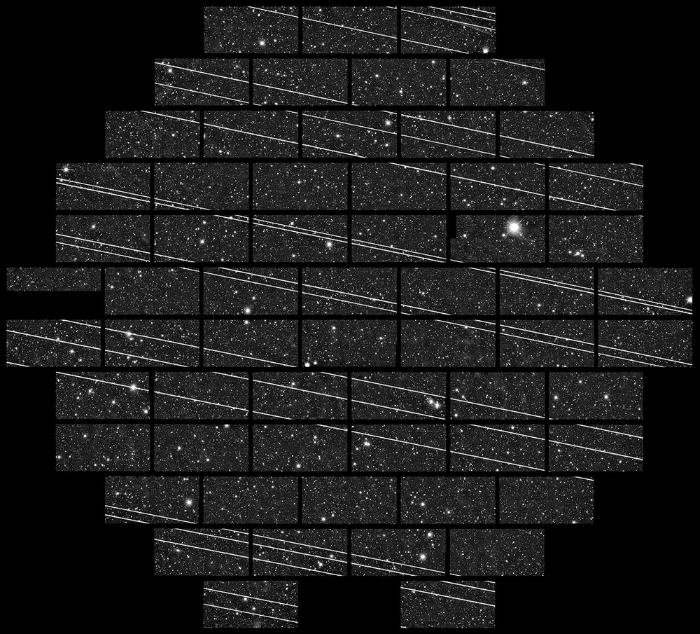
Astronomy may see dramatic changes in the future if thousands of mini-satellites are in low Earth orbit. This is due to the fact that, in telescopic photos, the satellite reflections look like unsettlingly brilliant points of light. Additionally, the night is already becoming noticeably brighter due to flare or stray light from artificial Earth satellites.
Luminous spots in the sky
As chains of dazzling points of light, the first 60 Starlink satellites from SpaceX that were launched in May 2019 immediately generated a sensation around the globe. Due to their low height, sunlight reflected off of their flat, glossy metal surfaces was easily seen. When the Earth’s surface is already completely black but the satellites are still being lighted by the sun, the brilliant reflections mostly happen soon before dawn and immediately after sunset.
Astronomers were concerned about the following: It’s anticipated that there will be tens of thousands of these satellites in the next few years. This increases the risk of possible negative effects on astronomy conducted both on Earth and in space. The American Astronomical Society (AAS) issued a warning on this. Under bad circumstances, even the reflections of regular satellites may obstruct or even make telescope photos useless, and the danger rises proportionately for constellations.
Up to 40 percent unusable recordings
Olivier Hainaut and his colleagues at the European Southern Observatory explain that a strong satellite reflection “might overwhelm the detector and destroy the whole picture with a big, powerful telescope” (ESO). The researchers predict that reflections from satellite constellations might make 30 to 40% of the wide-angle photographs obtained in the first and final hours of the night from such a telescope useless.
The failure rate, however, is estimated to be less than 1% for telescopes with limited fields of view or for spectroscopic studies in the visible and near-infrared. However, they consider it essential that satellite operators, astronomers, and governmental organizations reach a consensus on how to reduce the possibility of unintended consequences in astronomy.
Avoiding glossy surfaces on satellites is one precaution that may be taken, as SpaceX is now experimenting with a number of its Starlink satellites. According to astronomers, the positioning and direction of the satellites should be managed to reduce light flashes that are directed at Earth, such as those produced by solar sails.
More orbital flare

This is crucial because, as recently discovered by Miroslav Kocifaj of Comenius University in Bratislava and his colleagues, satellite constellations may affect nighttime light pollution and astronomical imagery in ways other than the direct interference effects of bright light spots. They used a model to determine how much diffuse dispersed light is already produced by reflections from the tens of thousands of bigger space debris objects in orbit and the almost 3,400 operational satellites.
As a consequence, the night is illuminated by the orbital debris and active satellites alone to the tune of 16 to 20 microcandela per square meter. The researchers explain that this amount of light is above the critical threshold that the International Astronomical Union has designated as an acceptable upper limit for light pollution at astronomical sites. This amount of light corresponds to about 10% of the natural brightness of the night.
In other words, even at far locations, orbital flare already brightens the night. This might become worse if tens of thousands more satellites and their solar sails are deployed later.



